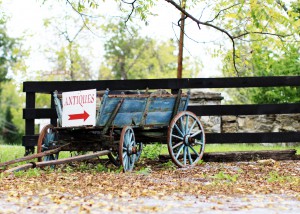Nature The Teacher At Oak Hart Farm
by Annie Young
When is a farm more than a farm? When it’s a classroom! At Oak Hart Farm the fields, hoop houses, kitchens, and streams are all places where learning happens. “Let nature be your teacher” is their mission. The whole family brings the philosophy into everything they do at the farm.
Shawna Hartsook, her husband Woody Hartsook, and father Rufus Rinker worked to create the farm model that operates today. But Shawna credits her whole family for making the farm run successfully. Everyone has a job on the farm—either helping harvest the CSA, building hoop houses, teaching the numerous children’s camps and programs, or preserving food. Even the grandchildren are young farmers! From a thriving CSA to children’s summer camps, field trips, farm dinners, even canning and weeding parties—learning is always on.
Oak Hart Farm grows a large variety of vegetables by using sustainable organic practices. It’s important to the farmers that they grow using methods based on healthy living and environmental practices. “I grow food that I feel good about feeding to my grandchildren,” said Shawna. It’s the combination of family values and sustainable growing practices that form the core of their health-based philosophy.
Shawna says Oak Hart strives to balance rigorous organic practices with practicality. They grow vegetables that naturally grow well in the soil without the need for chemicals. “I am a sustainable organic gardener,” continues Hartsook,
“and I am a local eater.” Eating well and teaching others about healthy living is what the family values most as farmers.
One of the special offerings at Oak Hart is the CSA. The Community Supported Agriculture model is based on a customer buying a share and receiving a bag of vegetables every week. Shareholders receive whatever the farmers put in their share, depending on what is available and ripe. What makes Oak Hart’s CSA different is their Selectable Delectables. Each week shareholders get to choose from eight to twenty varieties of vegetables. From lettuce, carrots, radishes, corn, potatoes, tomatoes, eggplants, beans, greens, sweet and hot peppers, and more, customers get to pick what they want in their share. The CSA season lasts from June through September. When customers get to choose, the Oak Hart farmers say, less food is wasted. It makes for a stronger relationship between farmer and customer too.
The CSA is not all that Oak Hart has to offer. Their educational programs are popular with many families in the area. In 2011 more than 450 children participated in summer camps, cooking classes, and field trips. Even more children came in 2012.
Six certified Virginia teachers work together to plan and facilitate these programs. Some programs focus on local ecology, while others center on the garden or cooking classes using vegetables from the farm.
“My favorite camp activity at Oak Hart is Creek Mucking,” Bella Stem, a young camp regular told me. “We have discovered lots of neat critters in the Creek. We get to examine them and look them up on our reference sheets. I also enjoy cooking camps at Oak Hart. I love that we go out in the fields and pick our ingredients to prepare our themed meals. They are so delicious! Farmer Shawna and all her Camp counselors totally rock!”
Creek mucking, vegetable picking, and preparing foods are typical activities that fuel the fun at the farm.
Teaching the connection between growing food and healthy living isn’t limited to children. Adults learn, too. CSA members receive recipe cards about how to prepare their foods. Shareholders connect with the growing process.
Naturally grown veggies look different than polished conventionally grown food in grocery stores. Loretta Stem, a CSA member says, “I love being able to run right down the road and pick up amazing veggies. They taste so much better homegrown on Oak Hart Farm. I also love that we get to see the operation in full swing and many times we are able to help harvest the vegetables right along with Farmer Shawna and her family members.” Tasting the difference is a great way to learn the value of locally grown.
Oak Hart Farm is a vibrant place where farmers are teachers, gardens are classrooms, and everyone is a student. Health, sustainable farming, family cooperation and community are the standards. And there are many opportunities to “let nature be your teacher.”
Oak Hart Farm is at 822 Shepherd Mill Rd. For information, visit oakhartfarm.com or call 540-533-3096.


